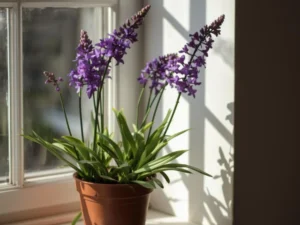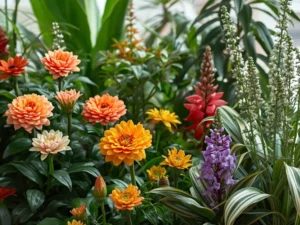Peace Lilies are loved by those who like indoor plants mainly because they have beautiful green leaves and attractive white flowers. However, one of the most common questions that arise is How Much Light should Peace Lily get? In order for your Peace Lily to flourish in your house or office, it is important to understand what specific light it requires. This article will touch on some of the special lighting needs for Peace Lilies—some that go beyond the basics.
Knowing Where Peace Lilies Grow Naturally 🌱
To answer the question How Much Light Do Peace Lilies Require?, it’s helpful to consider their natural habitat. They grow as understory plants in dense tropical rainforests of Central and South America. There, they experience filtered sunlight rather than direct sunlight exposure. To keep your Peace Lily healthy, you must provide these conditions indoors.
Best Lighting Conditions for a Peace Lily 💡
Light requirements are not demanding for peace lilies but there are certain things that they prefer. They do best when placed in a location with bright but indirect light. Normally, near north or east-facing window is ideal for them where soft diffused light is received without direct sun rays which could be too harsh on them. The exact amount of light necessary to see their lush green foliage and to encourage blooming without having too much sunlight overpowering them can also be confusing if someone asks how much illumination does peace lily need?
Can I Keep A Peace Lily In Low Light? 🌌
While many people know that peace lilies can survive in low lights situations, few realize that survival isn’t necessarily thriving. They may live under lower light levels but grow at a slower pace and possibly fail to produce its desirable iconic white flowers. If you’re placing your Peace Lily in a dimly lit room, consider moving it closer to a window for a few hours each day to give it the light it needs to bloom.
How To Tell If Your Peace Lily Gets Correct Light Exposure

The signs that your Peace Lily is receiving right amount of light can be observed through growth and plant appearance. Here are a few indicators:
Healthy Growth:
If your Peace Lily’s leaves are vibrant green, and the plant is regularly producing new growth, it’s likely getting enough light.
Flower Production:
Regular blooming is a good sign that your Peace Lily is happy with the light it’s receiving. If the flowers are scarce, it might be time to reassess its light exposure.
Leaf Color:
Leaves that are too dark green may indicate insufficient light while yellowing leaves might be a sign of too much direct sunlight.
Adjusting Light Exposure Based on Seasons 🌦️
Seasons change as well as natural lights’ intensity and duration. The shorter days during winter may require more exposure to light for peace lilies. Moving it closer to a window or supplementing with artificial light can help. Conversely, in summer months when afternoon sun gets intense you may have to protect your peace lily by moving them away from windows or using sheer curtains to diffuse the sunlight.
Using artificial light to support your Peace Lily 💡
If your house or office lacks natural light, you can go for an alternative of artificial lighting. For Peace Lily, you will require fluorescent lights and LED grow lights that provide the necessary spectrum. The lamps should be about six to twelve inches above the plant and on for 12-14 hours each day so as to imitate the natural pattern of a day.
Final Thoughts on How Much Light Do Peace Lilies Require? 🌺
In conclusion, understanding how much light do peace lilies require is crucial in maintaining their health and life. Though they can tolerate low, peace lilies do best in bright indirect light that mimics their rainforest origins. By observing your plant and making seasonal adjustments, you can create the perfect environment for it to grow, bloom and make your space beautiful.
Contact
Privacy Policy
Affiliate Disclosure
Newsletter
Subscribe our newsletter & get all latest news.


















